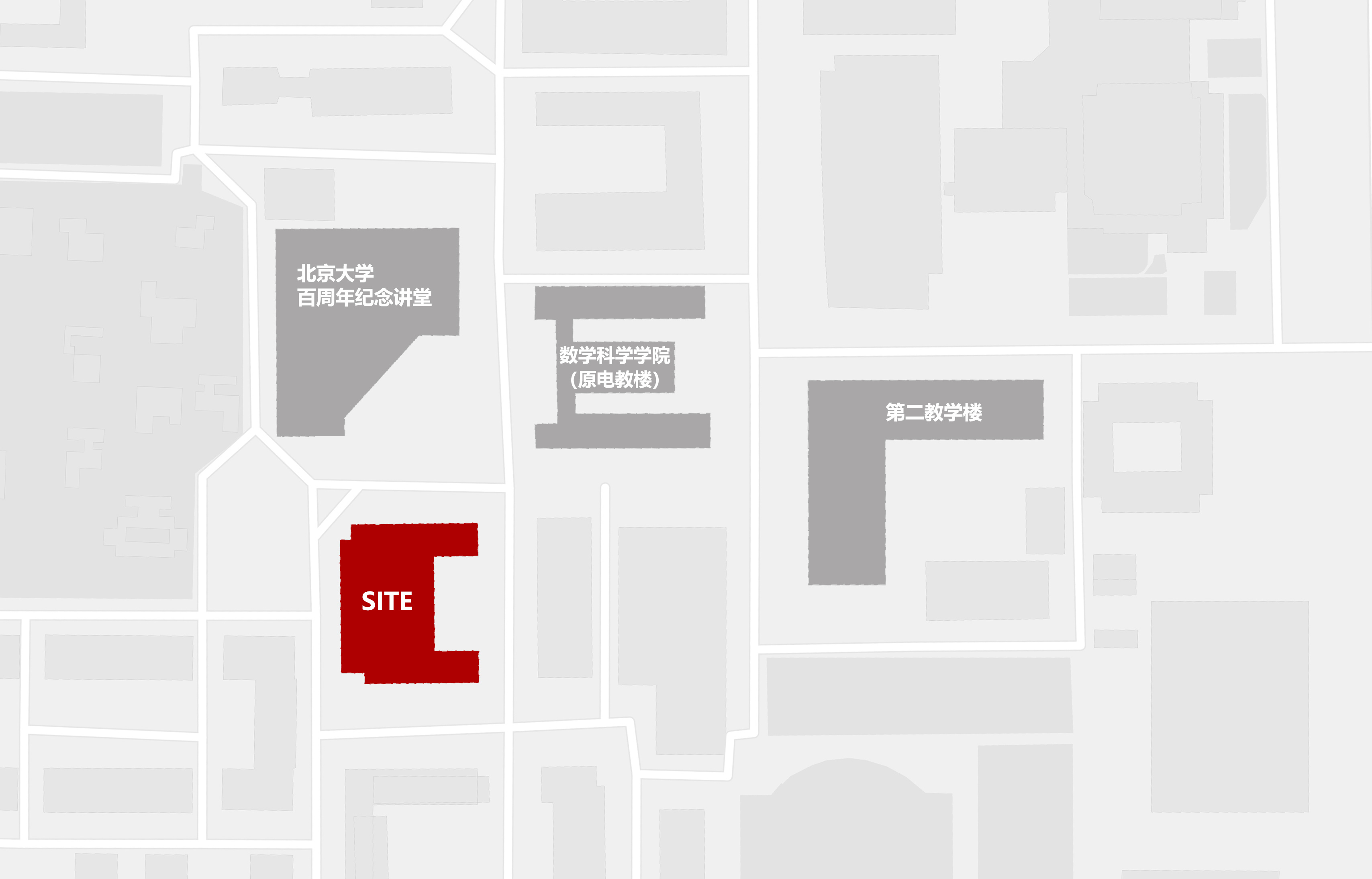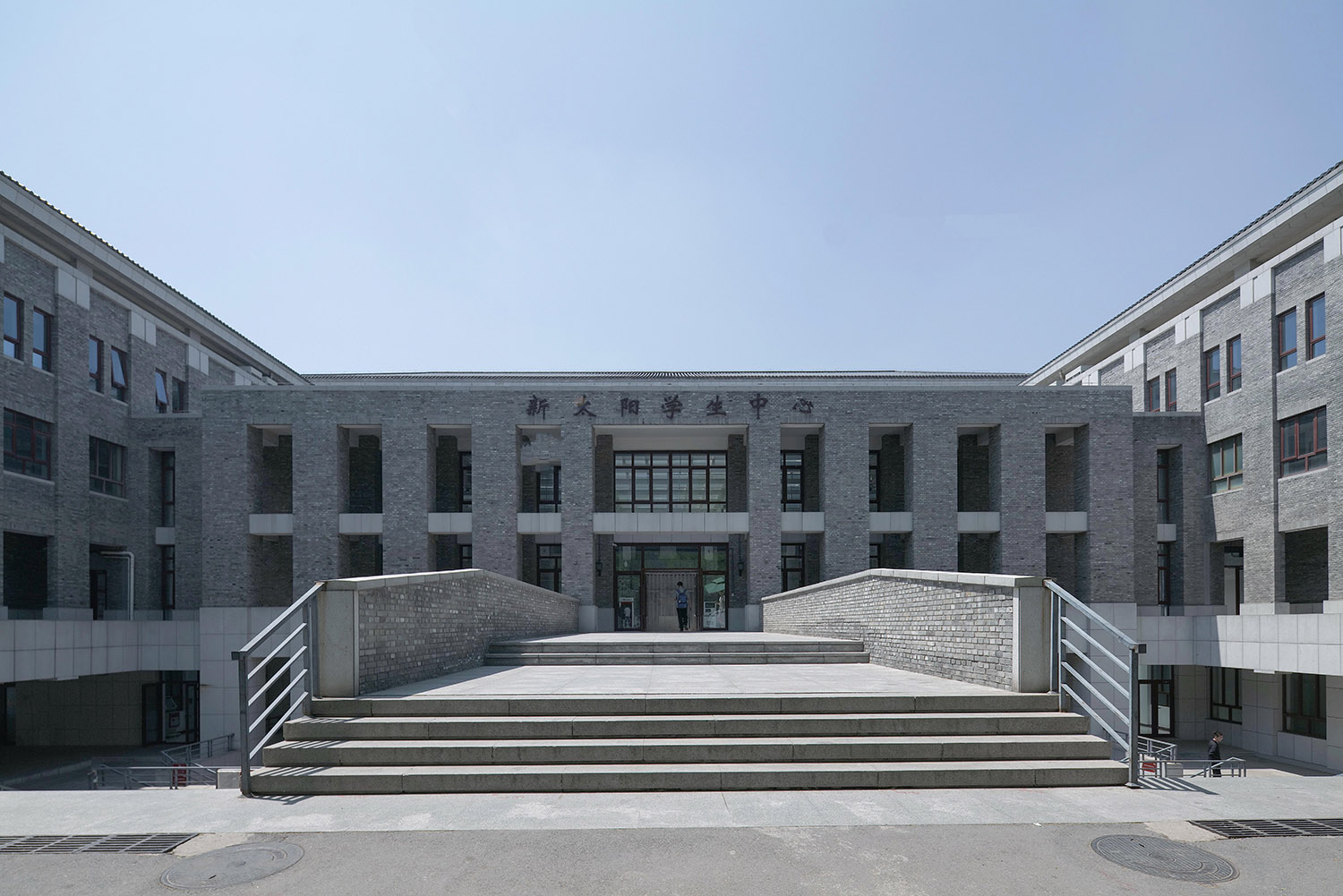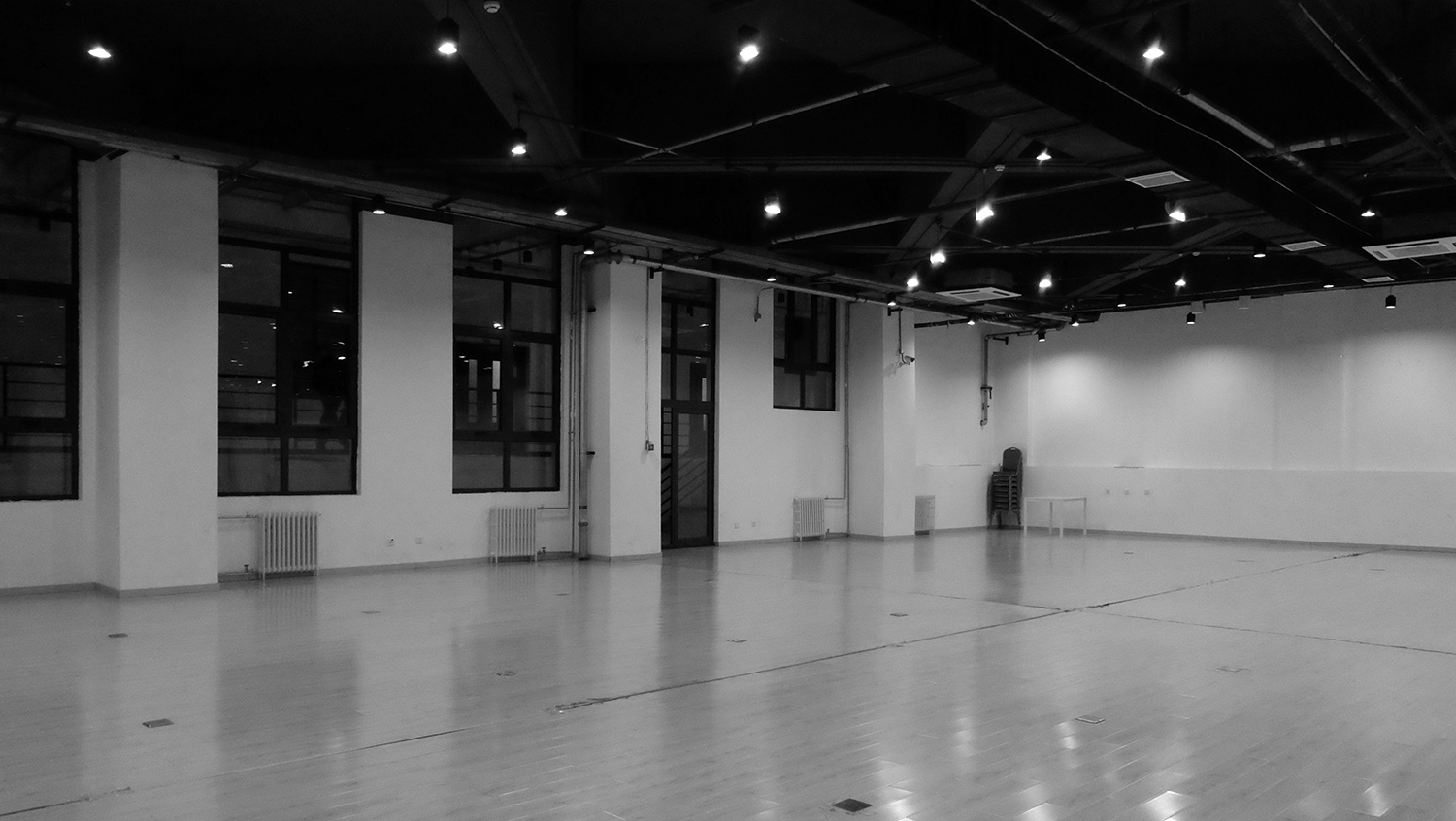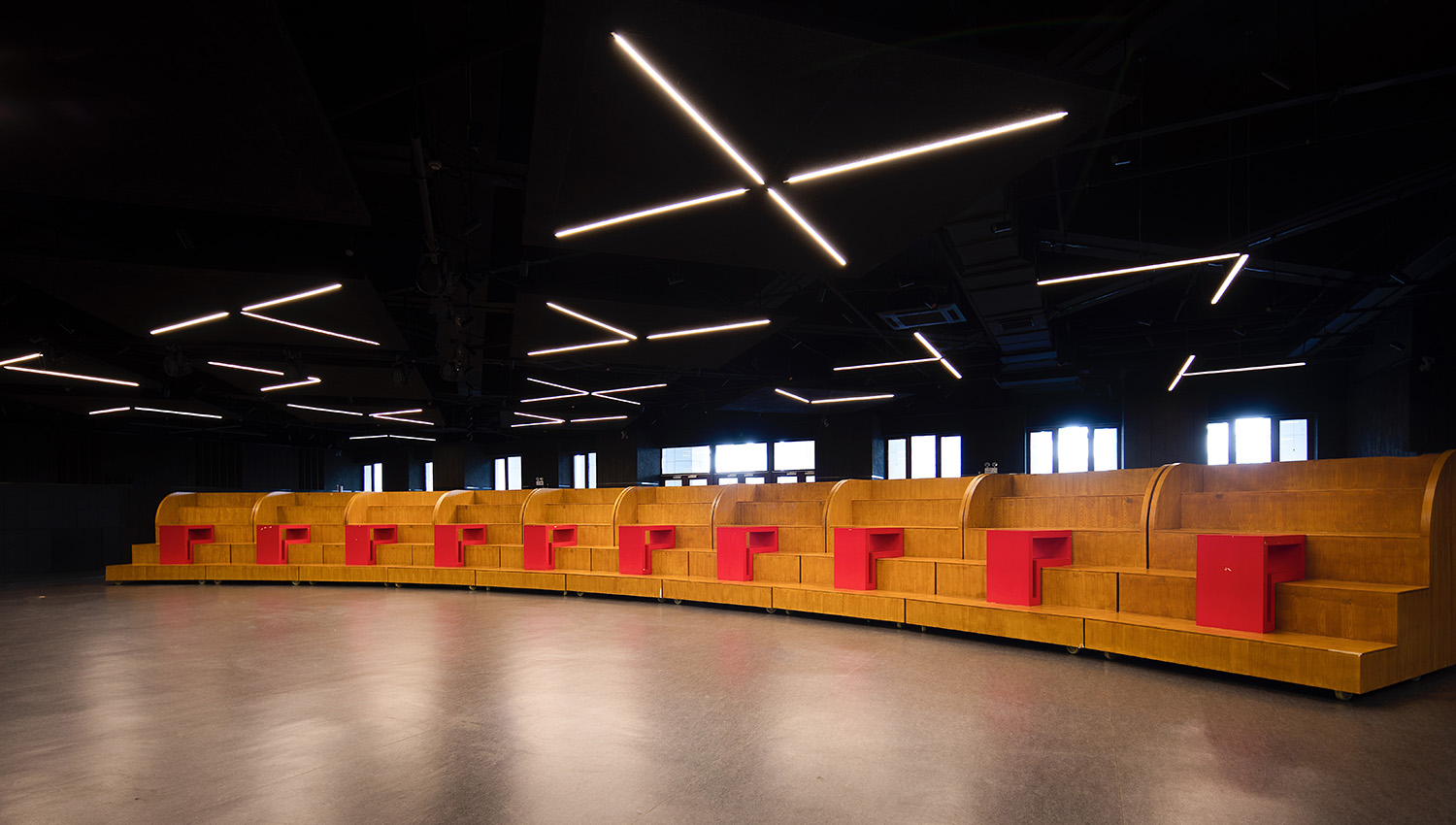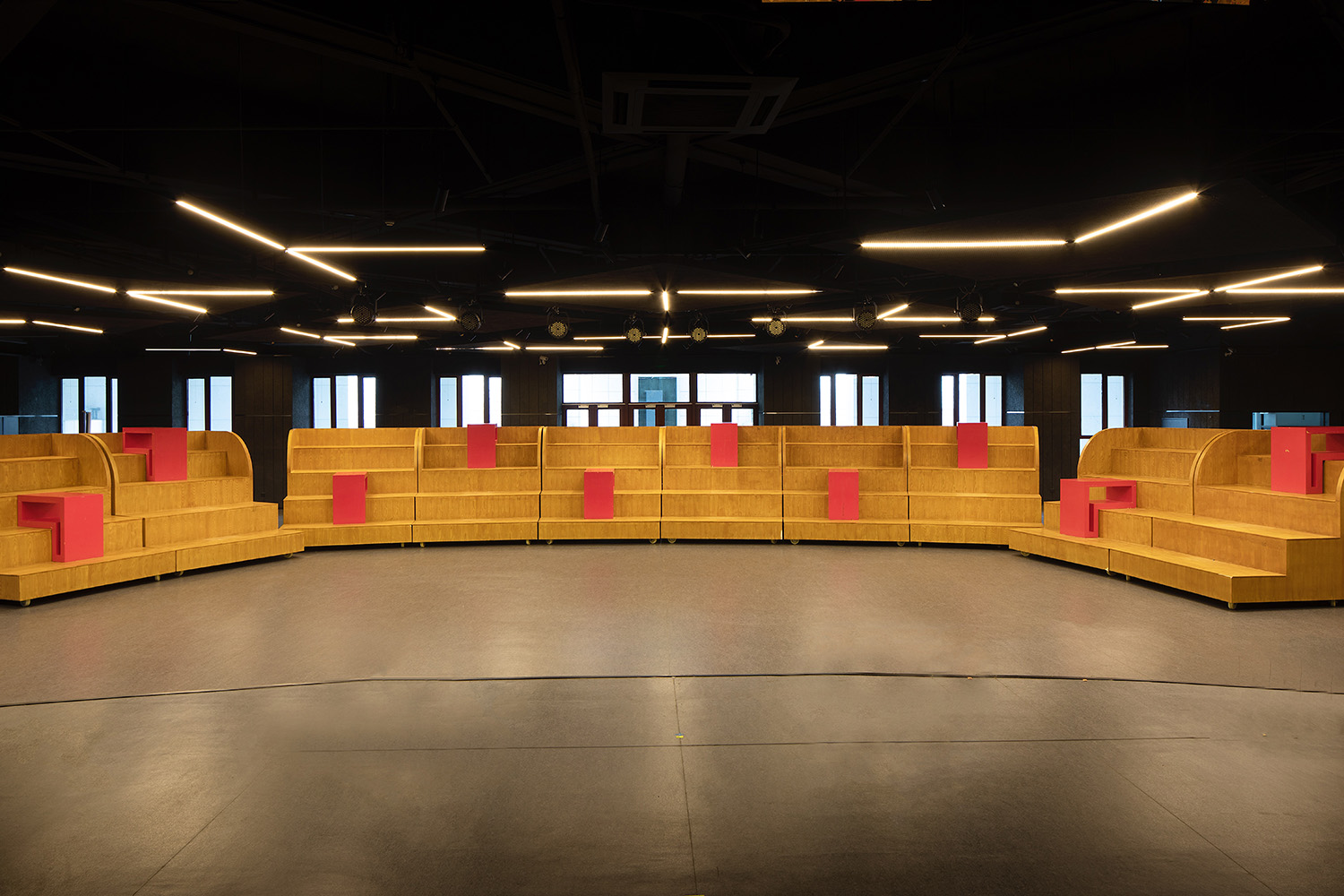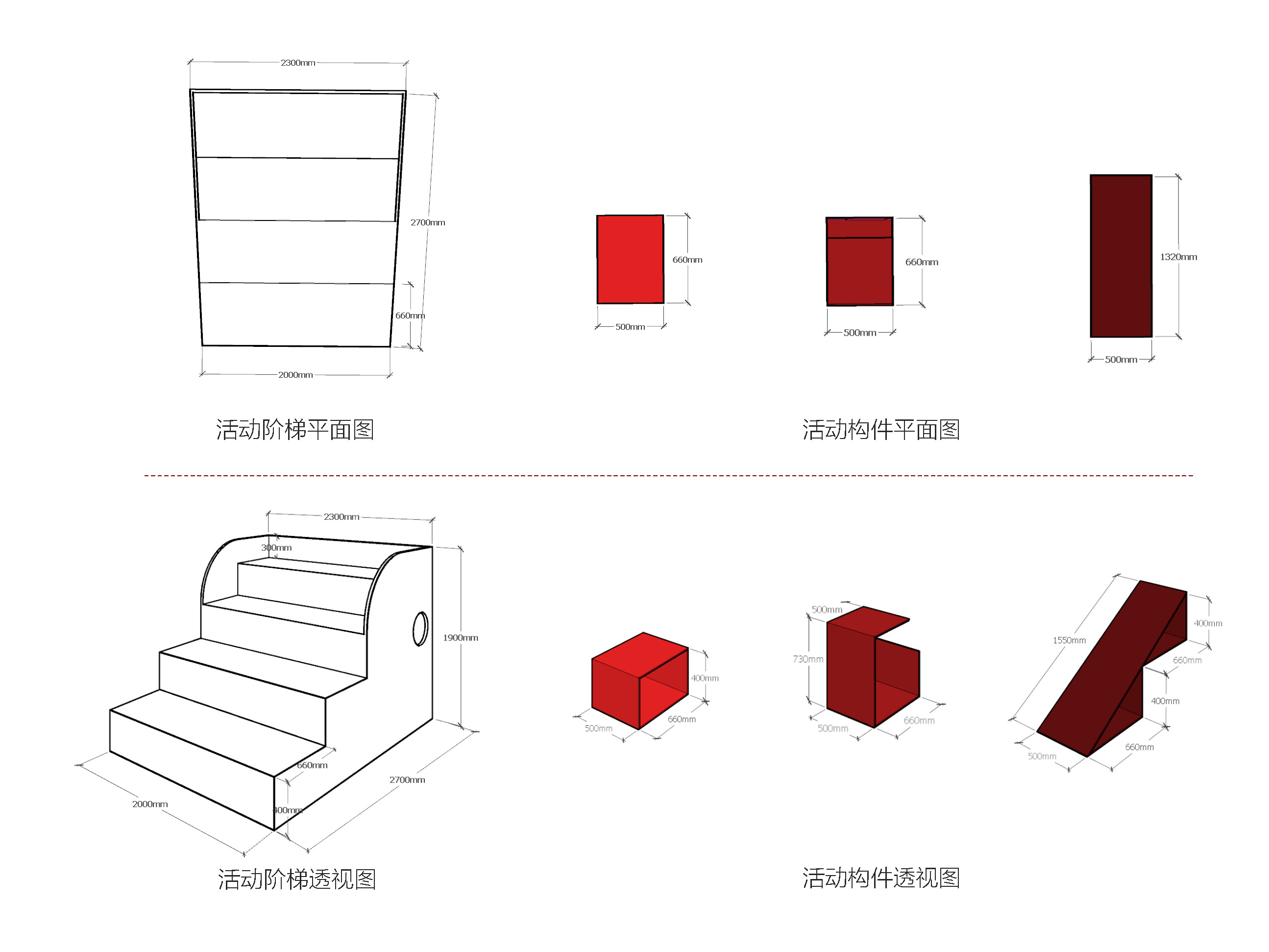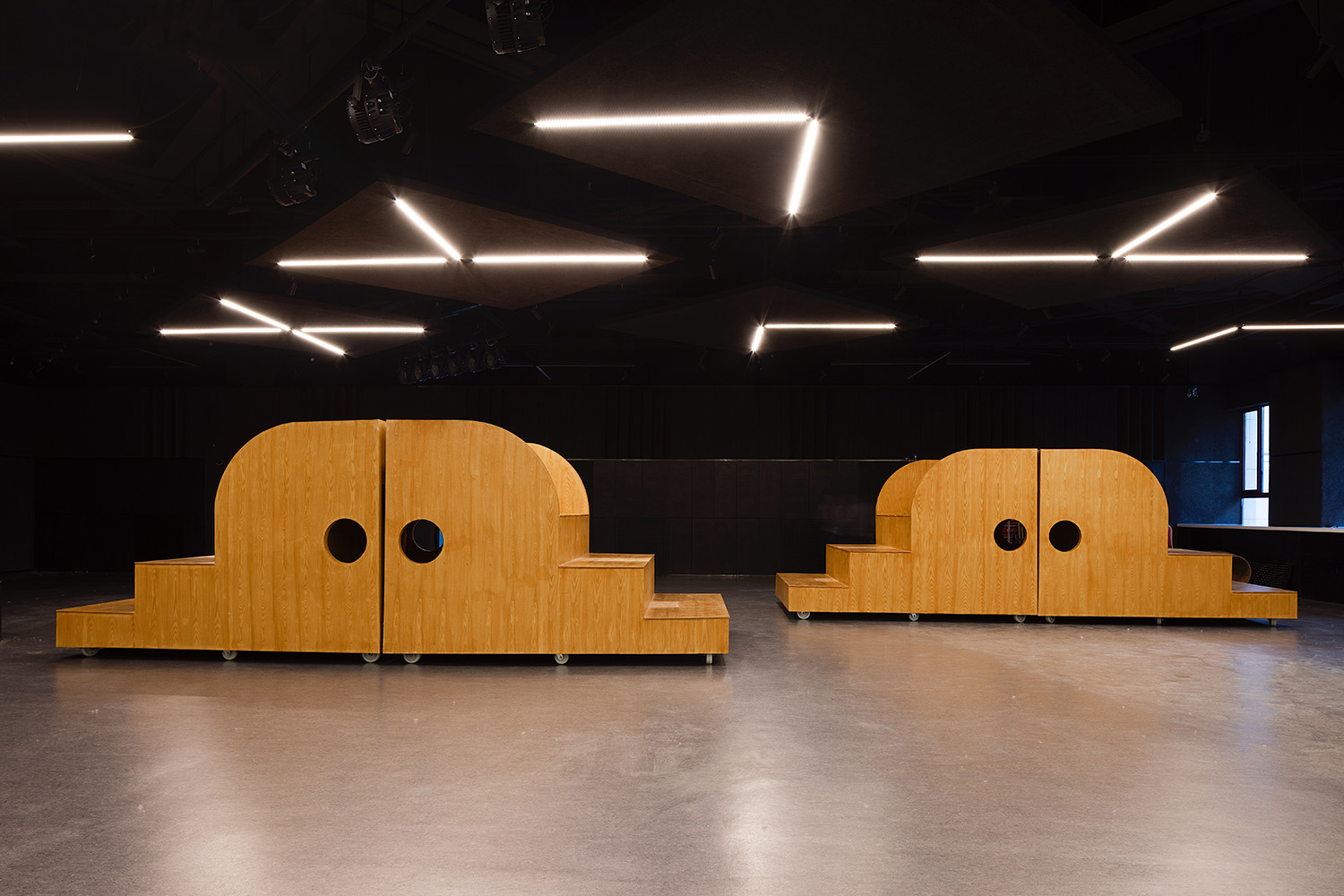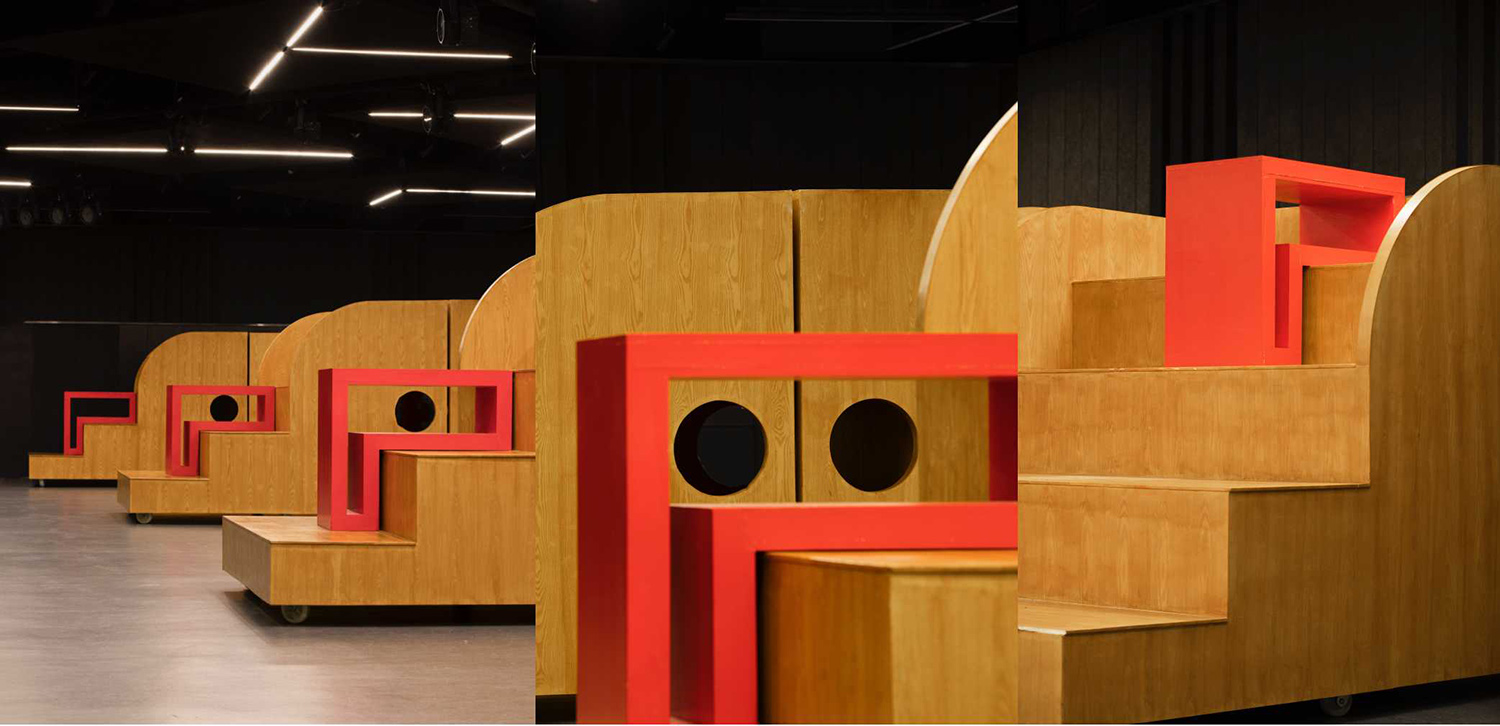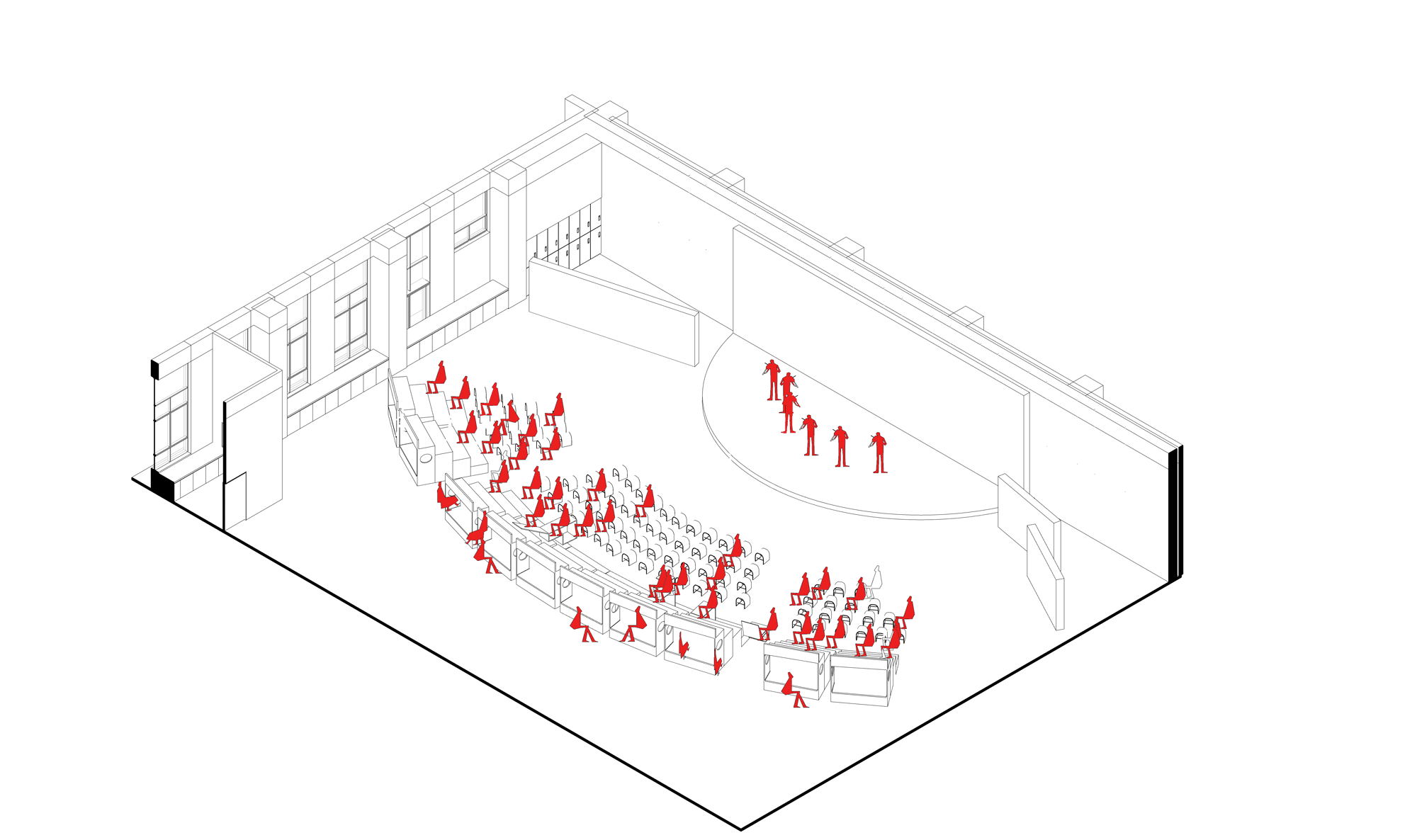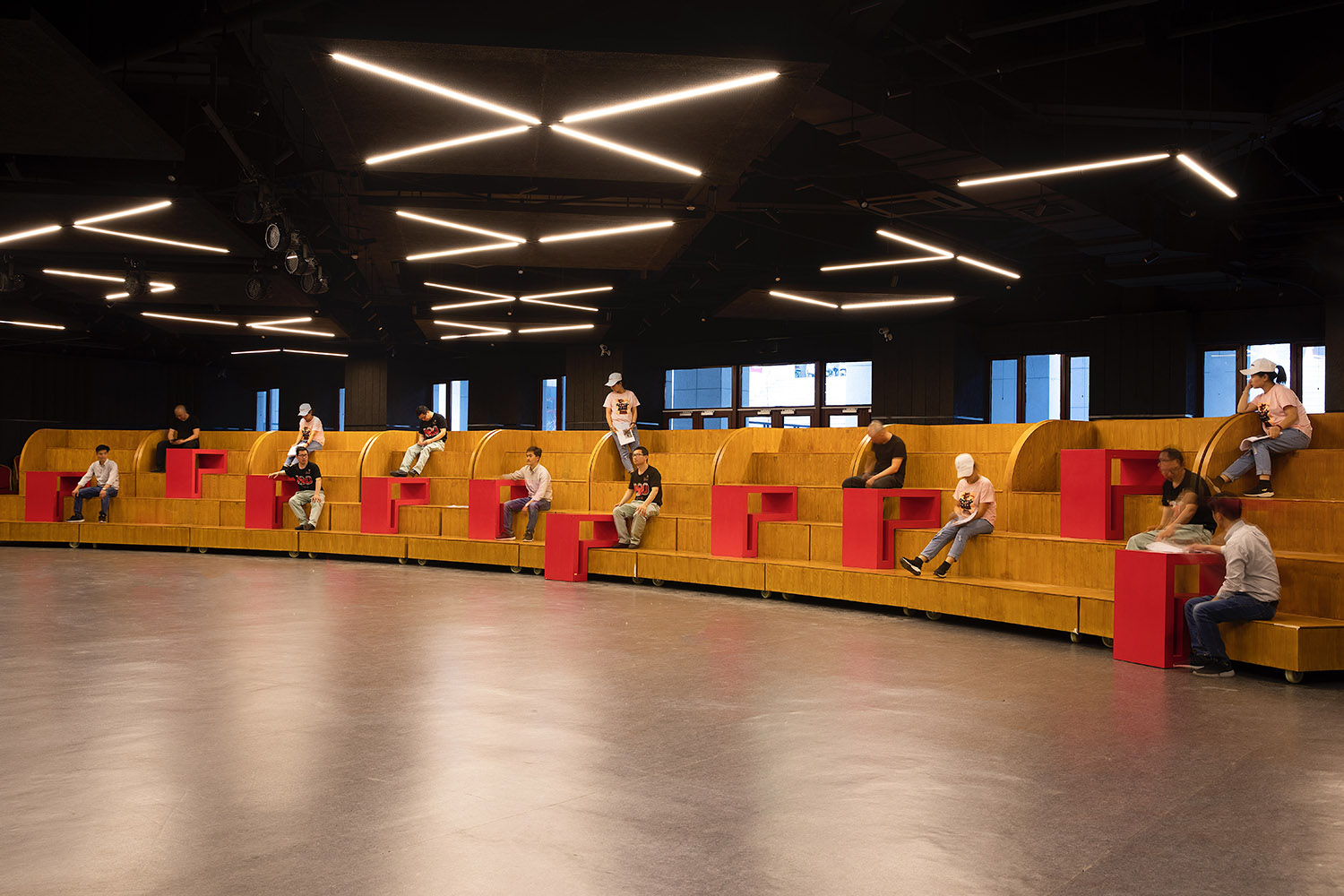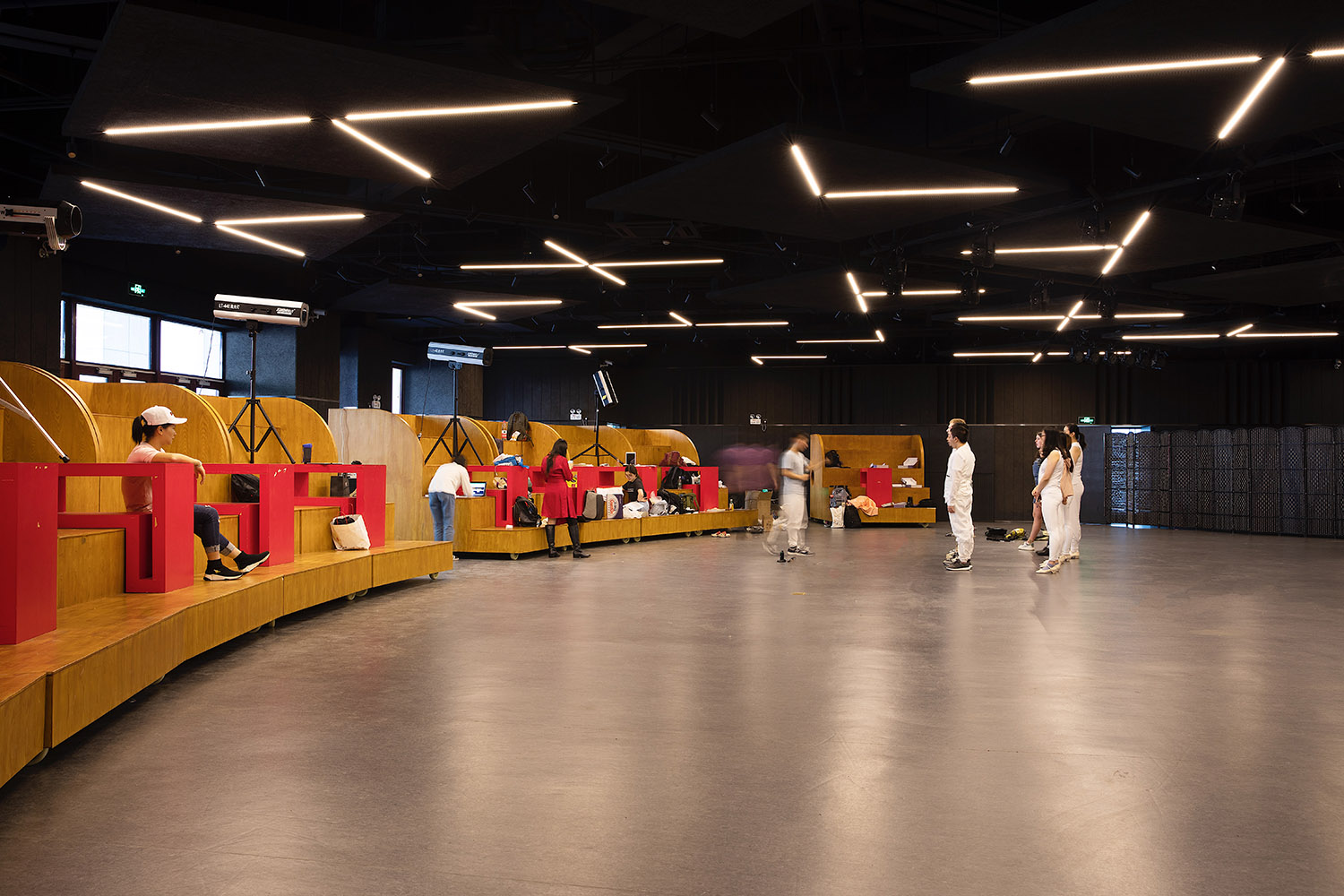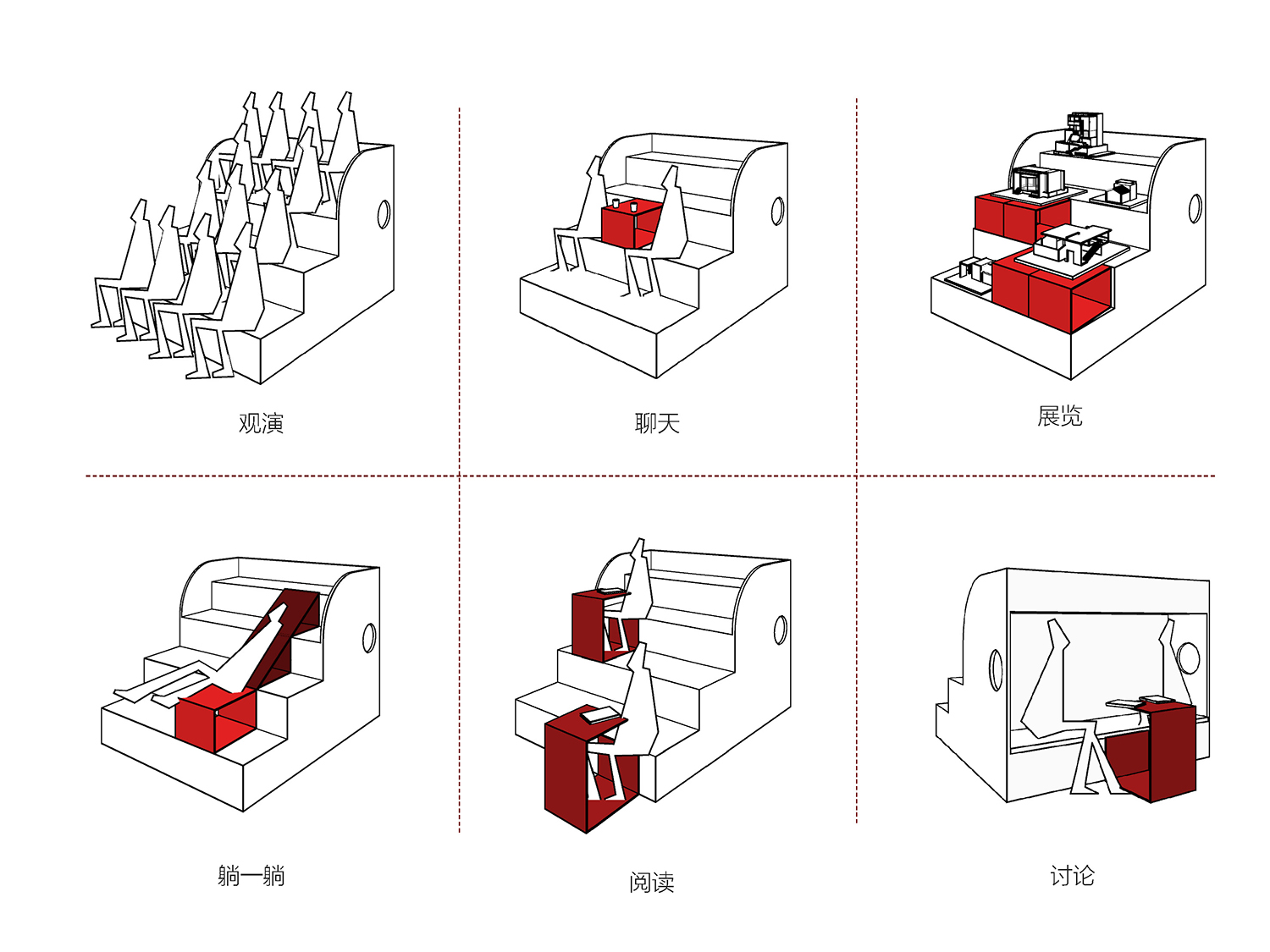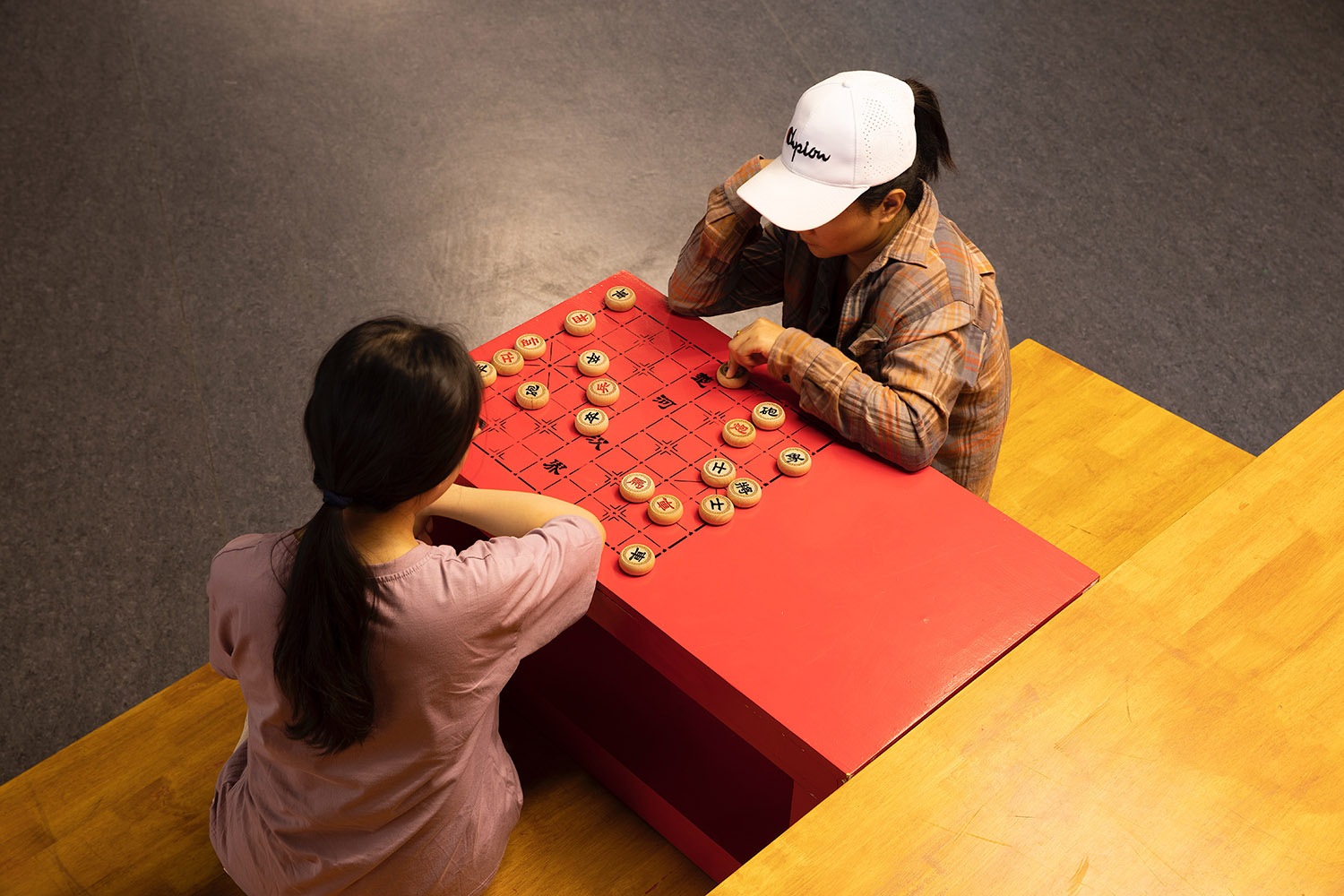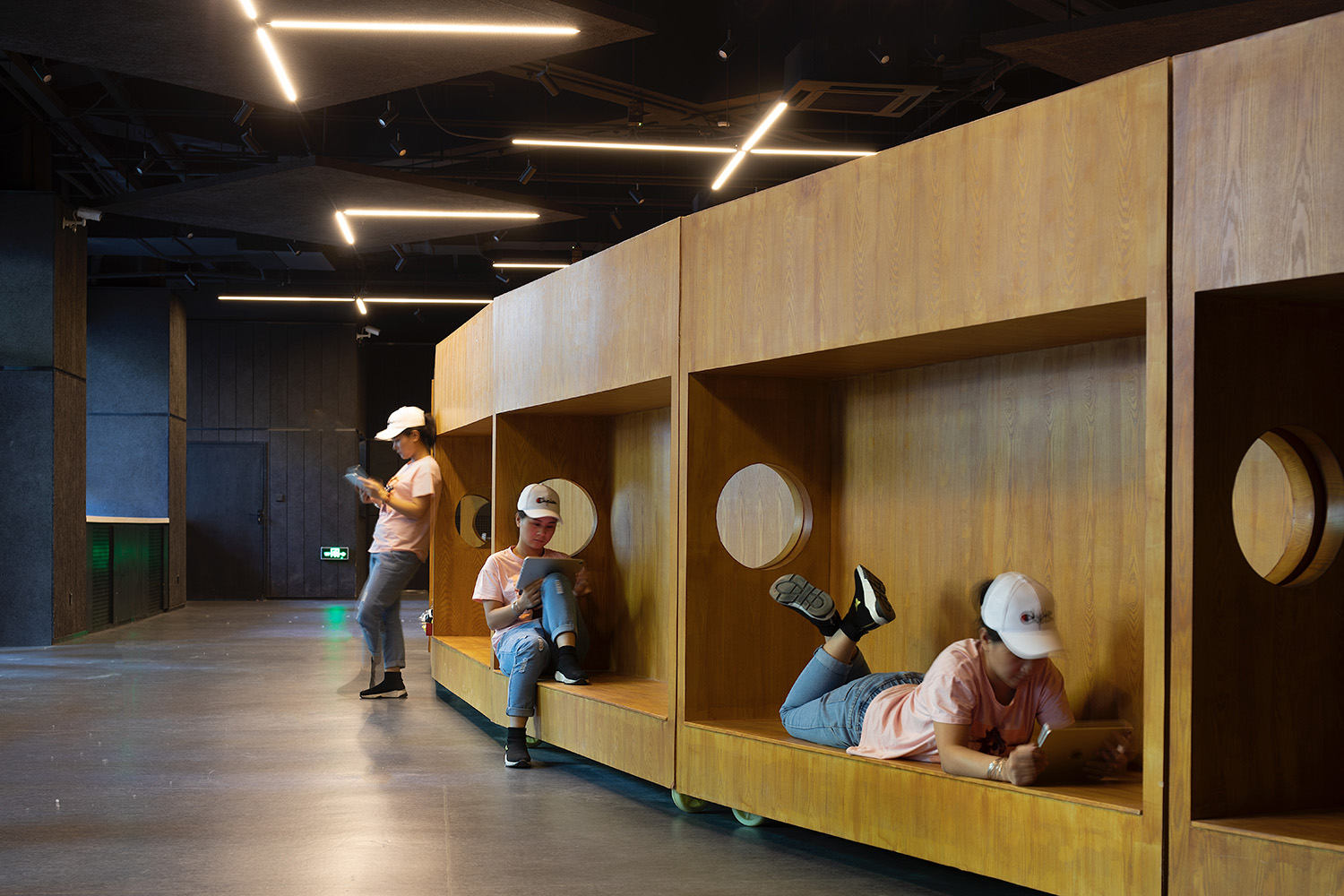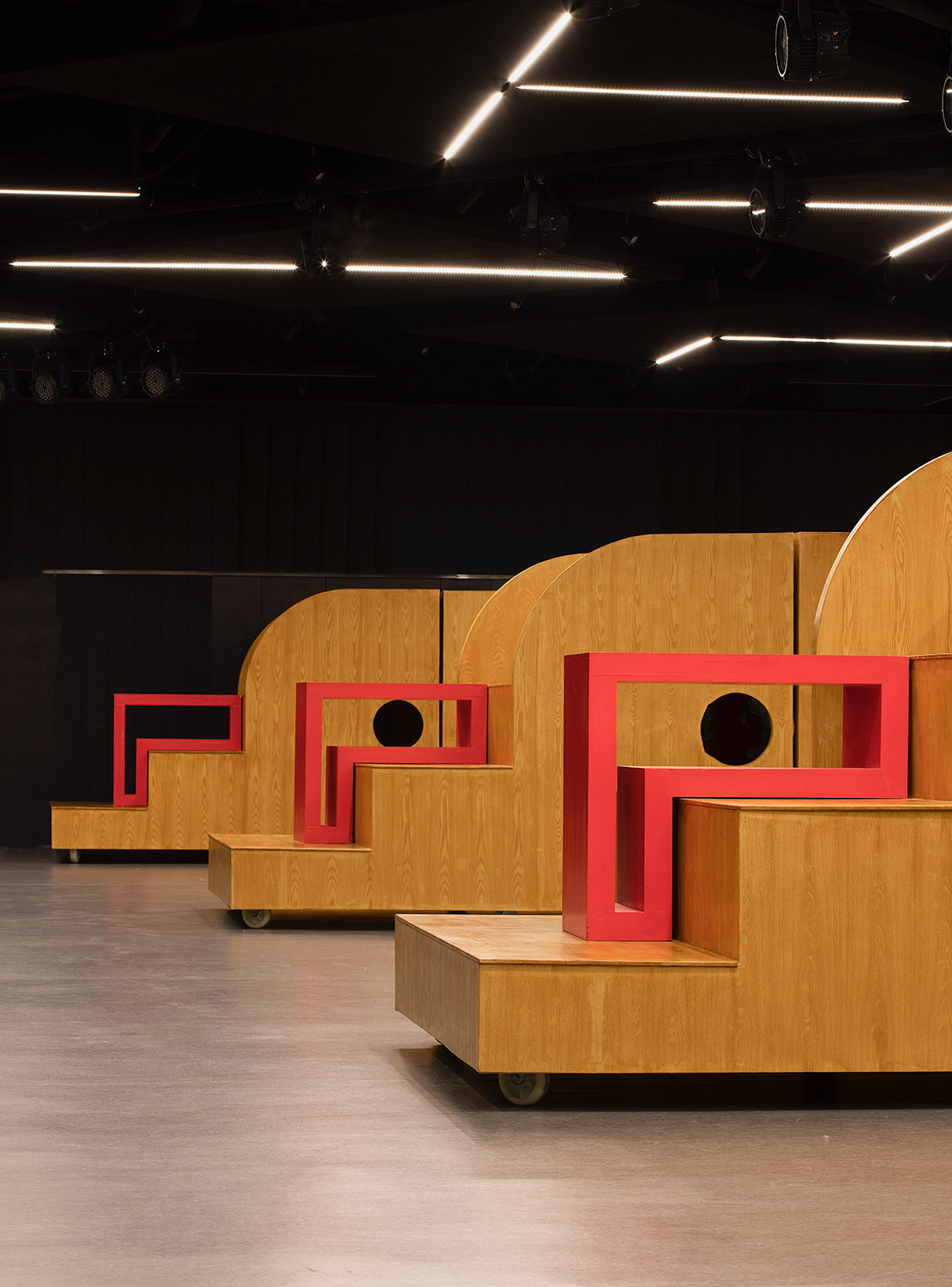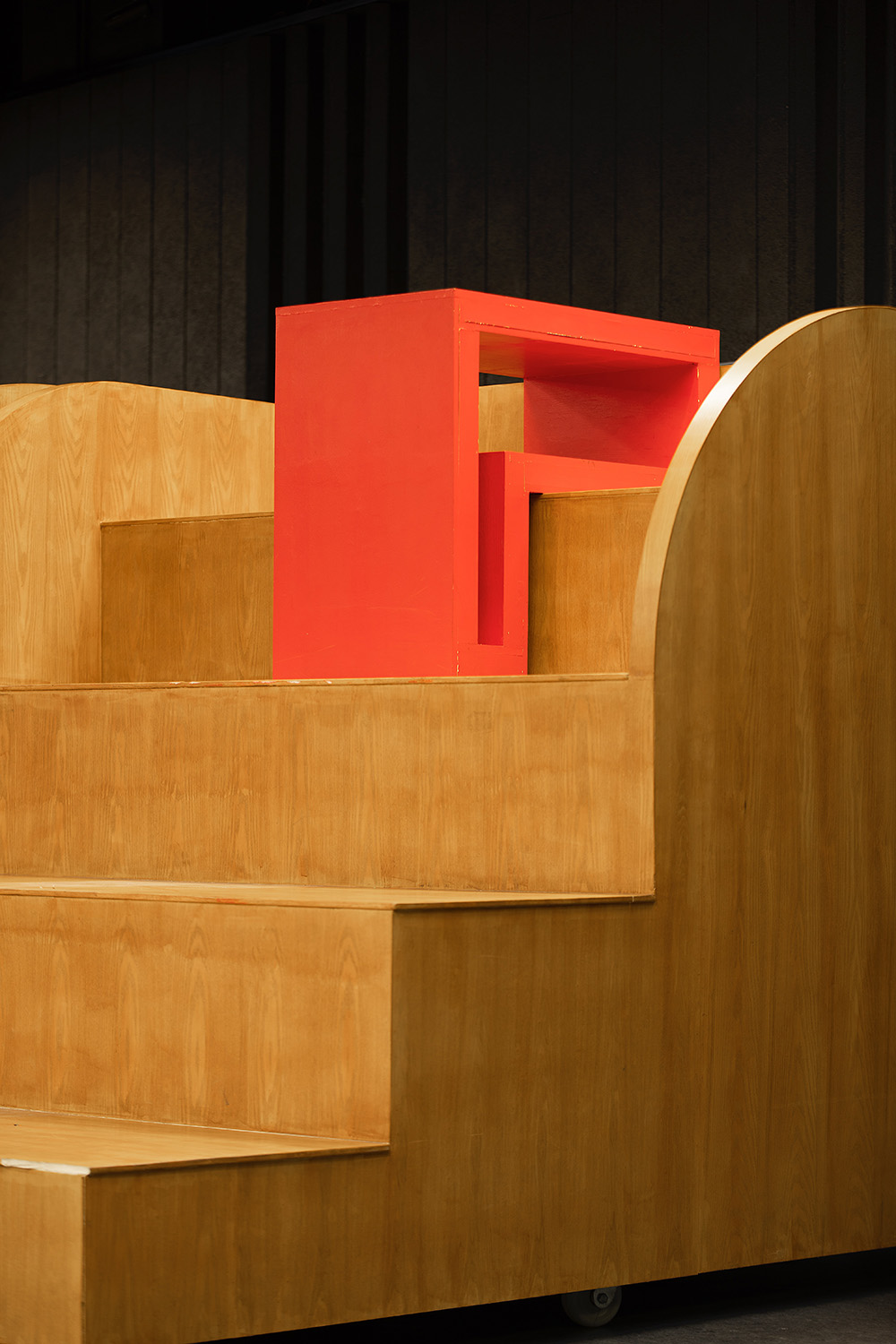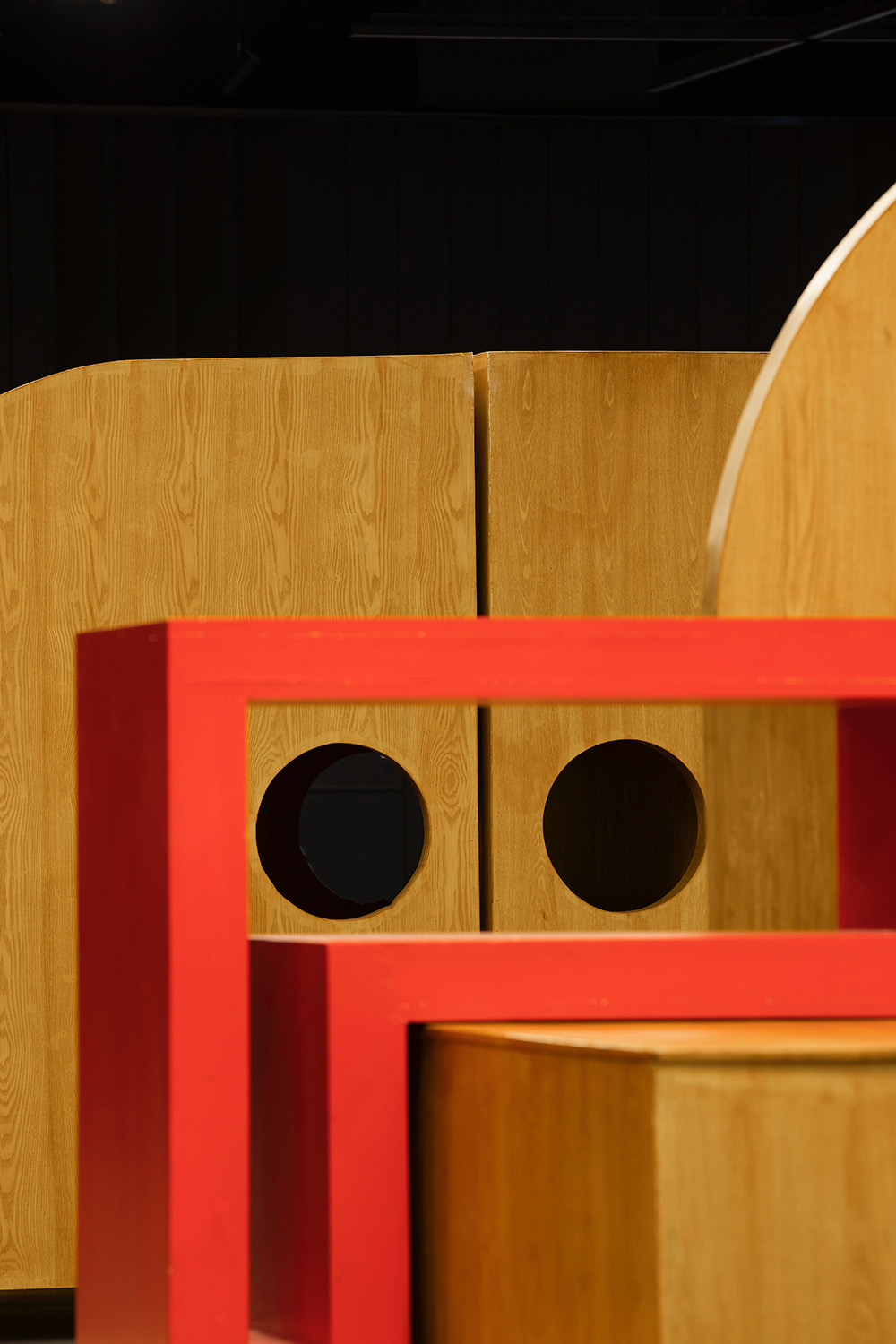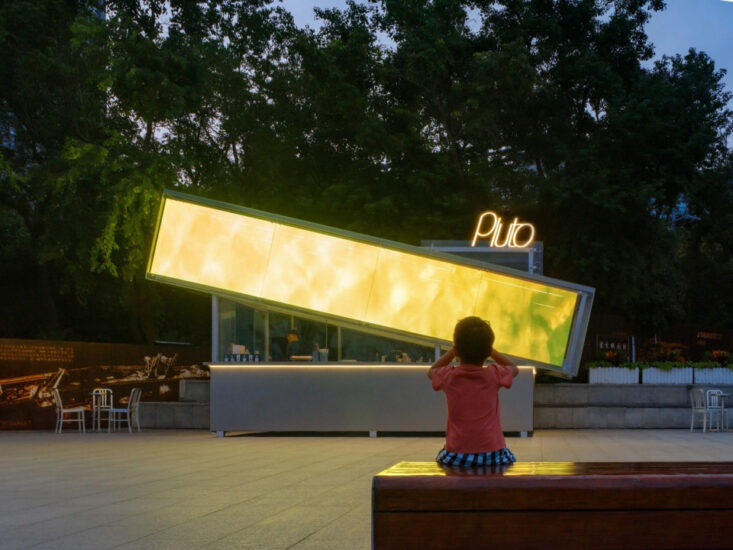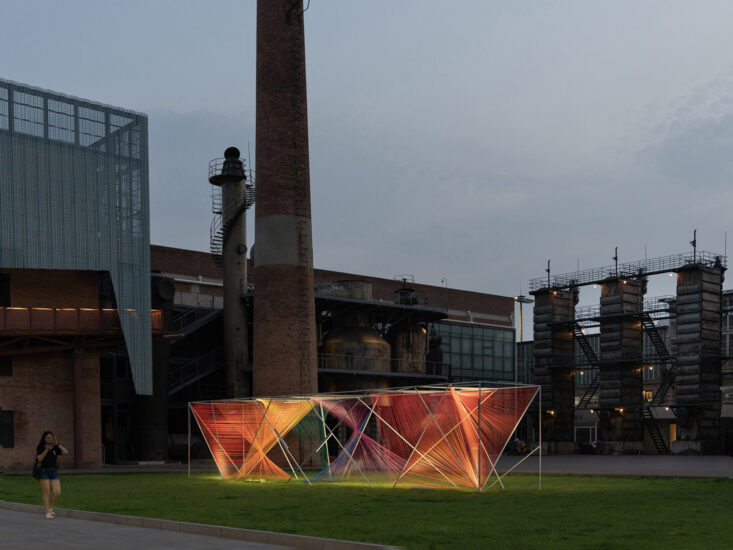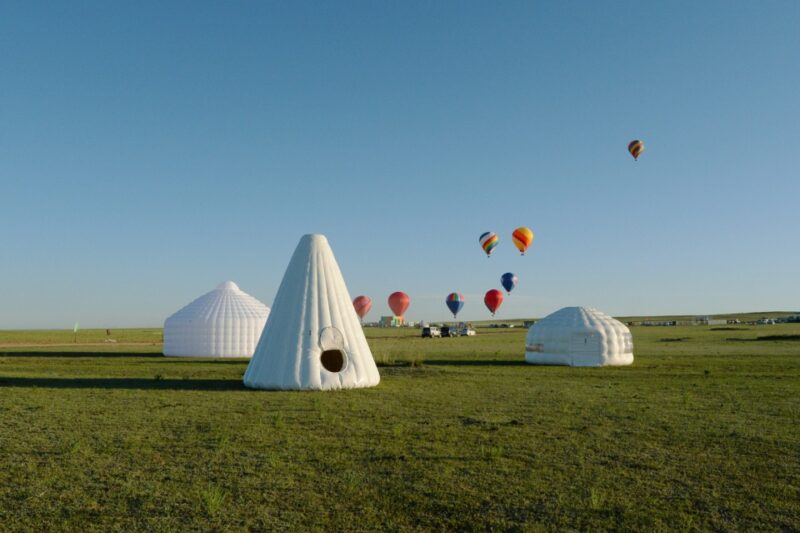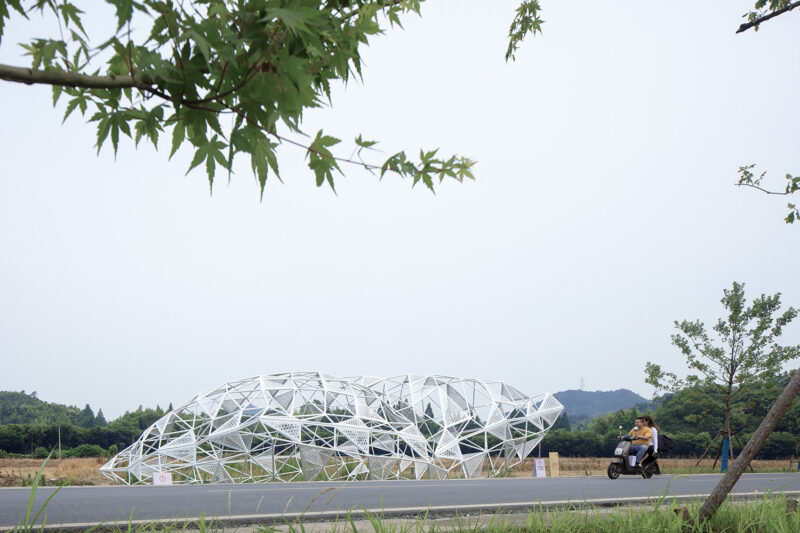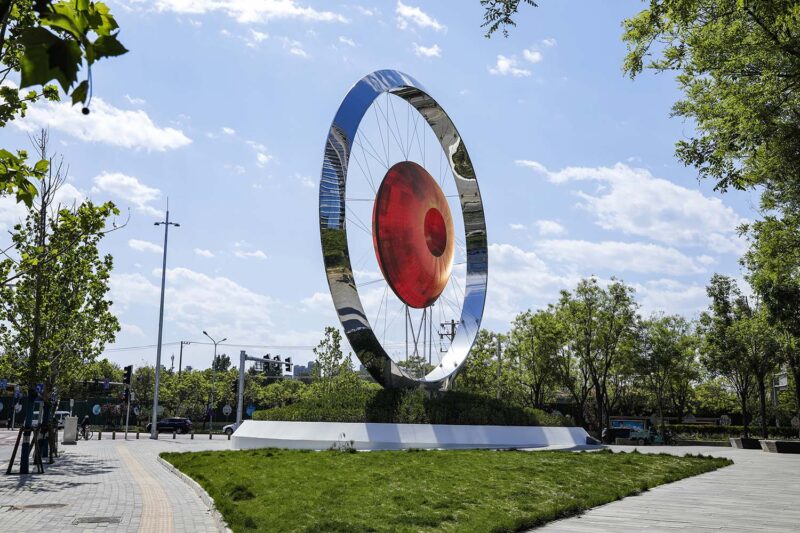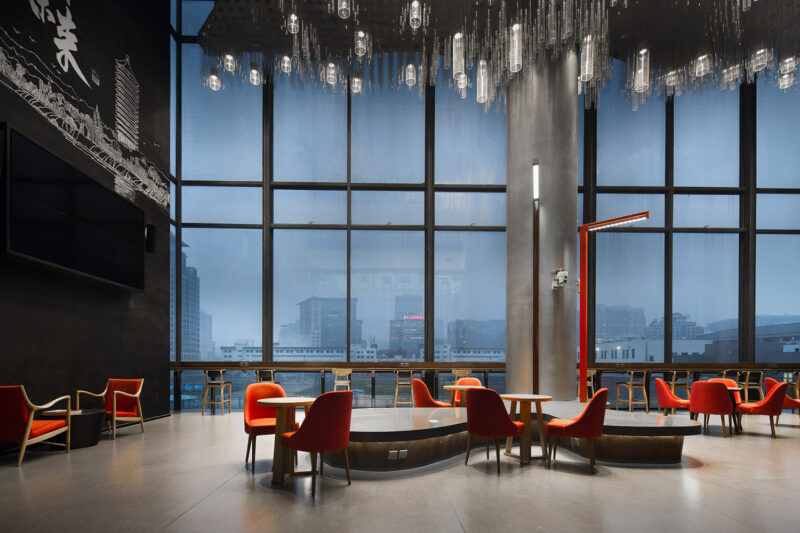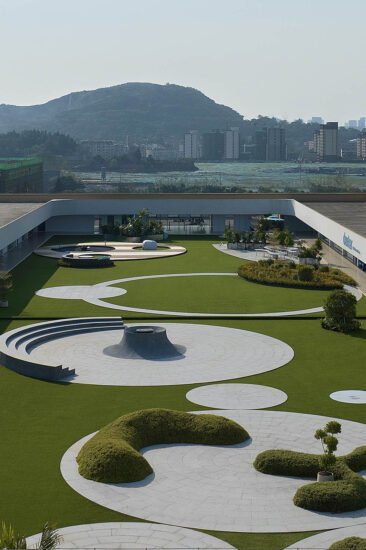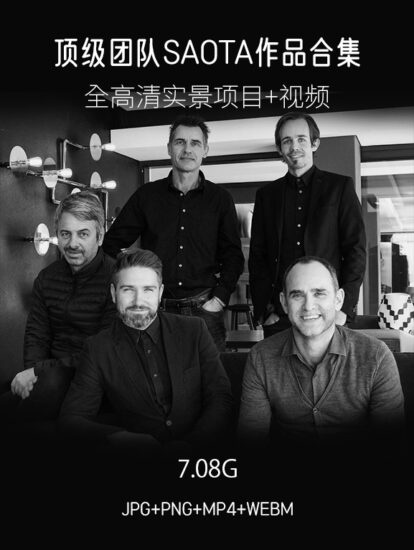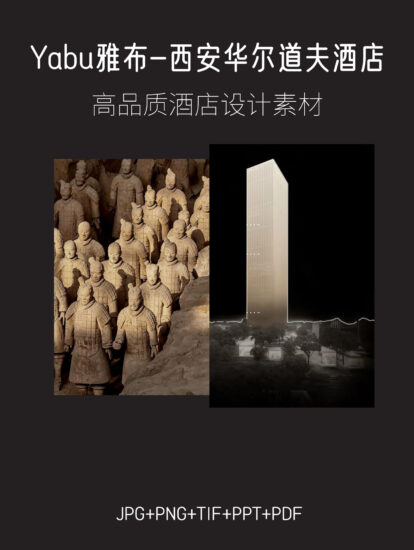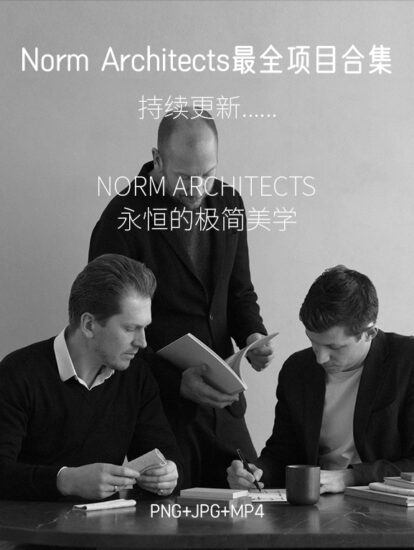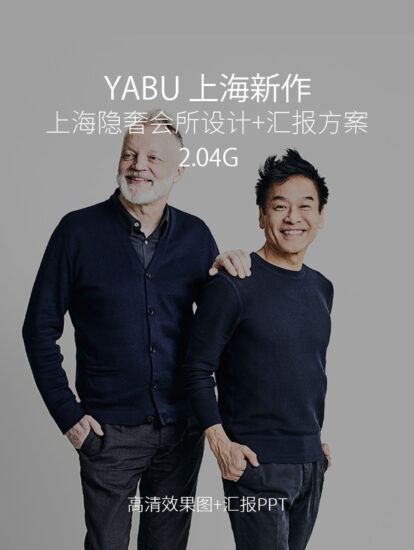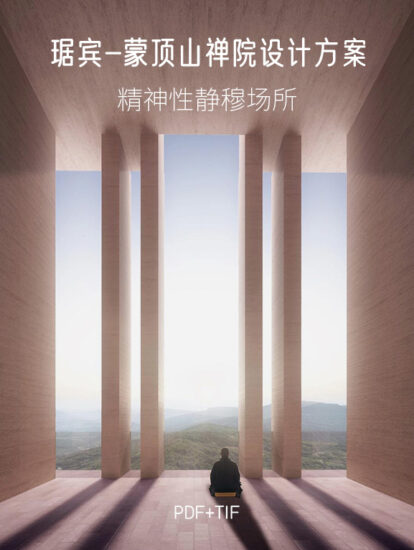北京大學新太陽學生中心,位於學生生活學習功能區的中心地帶,毗鄰北京大學百周年紀念講堂和第二教學樓,是一處集學生活動、服務、管理等功能於一身的建築。隨著信息時代的快速發展,功能單一化和設施老化問題讓空間無法滿足學生們的課餘需求,以小劇場為起點,讓新太陽學生中心成為校園創意“彙聚點”是本項目的重點。
Located in the center of the function area for students’ living and studying, and adjacent to the Peking University Hall and No.2 Teaching Building, the New Sun Student Center of Peking University is a building integrate student activities, services, management and other functions. With the rapid development of the Information age, the problems of single function and aging facilities make the space unable to meet the students’ extracurricular needs. Therefore, starting from the small theatre, making the New Sun Student Center a creative convergence point on campus has been the focus of this project.
∇ 項目區位 ©扉建築Site ©FEI Architects
∇ 新太陽學生活動中心 New Sun Student Center
∇ 新太陽學生活動中心室內空間改造前 Interior Space before the Renovation
人的行為取決於他們是誰和他們所處的環境。
People’s behavior depends on who they are and where they are.
“人體內裏的細胞屬性會潛意識地引導人的行為”,根據這個觀點進行延伸,一個空間的活化可以通過注入經過創意研發的單元構件,來開拓空間的功能,進而達到將“閑置空間”甚至是“廢墟空間”轉化為“幸福空間”的理想狀態。
“The attributes of the cells in human body will subconsciously guide human behavior” — from this perspective and extending further, the activation of a space can be achieved by injecting creatively developed unit components to expand the functions of space; as a result, the ideal of transforming an “idle” or even “ruins” space into “happy space” would be reached.
“在有限的預算內,我們堅決不做裝飾性的設計,而是創建一個細胞組件,以應對和開發空間功能的多樣性。”——項目設計師黃毅(扉建築合夥人)
“With a limited budget, we are determined not to do decorative design, but to create a cell component to accommodate and develop the diversity of space functions.”
— Project designer,Erin Huang(Partner of FEI Architects)
∇ 活動階梯全景 ©野貓 Activity Ladder Detail ©yemao
∇ 組合成半圍合型演出空間 ©野貓 Forming a Semi-Enclosed Performance Space ©yemao
細胞與構件:功能搭建
Cell and Building Block: Building Functions
正如人體細胞是負責創造一切基本功能的構件一樣,設計師以“化小-Less is more”的概念開始構思,讓每一個組件都能像細胞一樣創造更大的可能性。在這個基礎下,便使用了基本單元的概念,設計出一個階梯狀組件和三個小型配件。空間還是那個空間,但通過這件大家具設計,讓小劇場充滿無限可能,這也正是設計的價值所在。
Just as the human cell is the building block responsible for creating all the basic functions, the designer began with the concept of “Less is more”, so that each component can create greater possibilities like the cell. On this basis, the concept of basic unit is used to design a step-like component and three small accessories. The space is still that space, but through this big furniture design, the small theatre is filled with infinite possibilities, which is also the value of design.
∇ “細胞”構件設計圖 ©扉建築 Design Drawing of “Cell” Component ©FEI Architects
∇ 活動階梯基本單元 ©野貓 Movable Steps ©yemao
∇ “細胞”組件 ©野貓 Cell Block ©yemao
組織與係統:場景構築
Organization and System: Scene Construction
設計師依據固定的幾個單元組合,設計出了多個功能場景來滿足社團排練、陳設展覽、自習交流、小組討論、休息休閑、晚會派對等課餘需求。易於組合和移動的構件讓學生們可以自由發揮再創作,以增加功能的多樣性和提升空間的使用率。
Based on the combination of several fixed units, the designer designed a number of functional scenes to meet extra-curricular needs such as club activity rehearsal, display and exhibition, self-study and exchange, group discussion, rest and leisure, party and gathering, etc. The components, which are easy to combine and move, allow students to freely re-create to increase the diversity of functions and enhance the usage rate of space.
不同社團同時排練的時候,它們把空間分為幾個區域;紅色的小桌子既滿足討論,又是展覽的展示台,還是象棋盤;有正式演出時,看台圍合成弧形,形成完整的看台,配上臨時凳子,可容納300人觀演。讓原來的小劇場容納了更多可能性,由基礎生態演變到千姿百態。
When different clubs rehearse at the same time, the space could be divided into several areas; The small red table is not only for discussion, but can also serve as display table or chess board; When there is a formal performance, the stand is surrounded by an arc to form a complete stand; While with temporary stools, it can accommodate 300 people. Thus the original small theatre is able to accommodate more possibilities, evolving from a primary ecosystem to embrace a variety of forms.
∇ 空間滿足不同使用功能的動態分析圖 ©扉建築 Dayamic Graph of Space Accommodating Various Functions ©FEI Architects
∇ 學生們在改造後空間中的各種氛圍情境 ©野貓 Students in Various Situations after Renovation of the Space ©yemao
個體與行為:氛圍營造
Individual and Behavior: Ambience Creation
新的空間能激發人的創造性,同時也開發人的思維。當功能和場景得到滿足,師生們便成為了這個空間的主角。各種氛圍在這個空間裏彌漫,師生們實現交流互動和建立社會關係的可能,構件和組合就成為了觸發社交的一個關鍵因素。
The new space can stimulate people’s creativity and at the same time enhance people’s thinking. When needs of functions and scenes are satisfied, teachers and students become the protagonists of this space. All kinds of ambiences permeate in the space and make it possible for teachers and students to communicate and interact as well as build social relations. Thus components and combinations become a key factor in triggering social interaction.
∇ “細胞”引導人的行為概念圖 ©扉建築 Conceptual Map of “Cell” Guiding Human Behavior s ©FEI Architects
∇ 活動構件可以成為棋盤 ©野貓 Activity Component Becoming Chessboard ©yemao
∇ 活動階梯背麵可以成為閱讀區 ©野貓 The Back of Movable Steps Turning into Reading Corner ©yemao
「創意空間」與「情境構建」成為本次小劇場空間設計的主要線索,並開啟了「活化空間」與「美感教學」的先鋒,同時也展示了臨時空間的潛力。
“Creative Space” and “Situational Construction” have become the main clues of this small theater space design, as well as the pioneer in launching “Activating Space” and “Aesthetic Teaching”, which also demonstrate the potential of temporary space.
扉建築通過對這種易組合、可持續的方式進行另類的探索,希望將“細胞”重新引入到模塊化的公共結構中,為城市居民引導更多樣化的活動休閑方式。
By exploring, in an alternative way, such easy-for-combination and sustainable approach, FEI Architects hopes to reintroduce “cell” into the modular public structure and lead in more diversified leisure activities for urban
∇ 活動階梯細節 ©野貓 Component Detail ©yemao
項目信息
項目名稱:北京大學新太陽學生中心小劇場
項目地點:北京大學
麵積:680平方米
主創建築師:黃毅
設計團隊:卓錦萬
業主:北京大學
攝影:野貓
Project Name: Small Theater of New Sun Student Center of Peking University
Location: Peking University
GFA:680 m²
Chief Architect: Erin Huang
Project Team: Zhuo Jinwan
Clients:Peking University
Photographer:yemao


